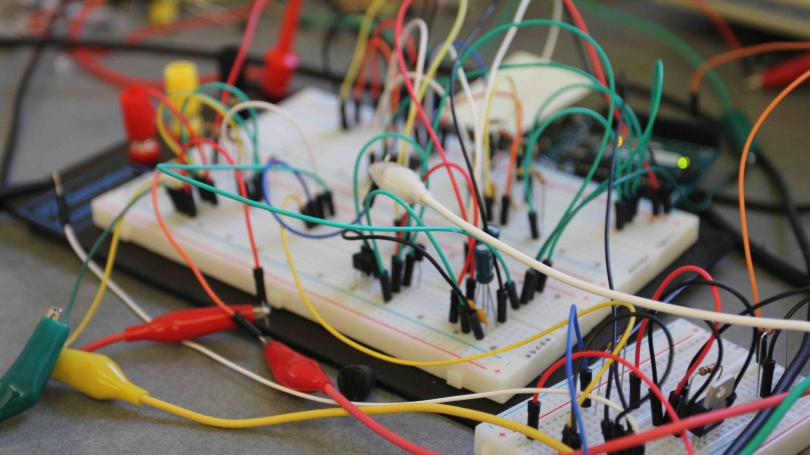
Menu
- Undergraduate
- Graduate
- Research
- News & Events
- People
- Inclusivity
- Jobs
Back to Top Nav
Back to Top Nav
Back to Top Nav
Researchers at DartNets Lab are experimenting with first "smart spaces" that use ubiquitous light for both data communication and human sensing.
The project features an interplay of algorithms, ceiling-mounted Light-Emitting Diodes (LEDs), and light sensors embedded in floors and in smart devices. Such smart spaces track users' gestures and separate shadows from light, enabling a continuous flow of data wirelessly not only between personal computers, but smart devices in rooms, buildings, trains and other indoor places. The integrated visible light communication project, or iVLC, is the first time an integrated networking and sensing environment have been proposed for sending information by light. This project is funded by
by a grant form the National Science Foundation.
The idea of iVLC has appeared in recent media articles, e.g., CACM, FierceWireless, and Phys.org.
Check out more projects at DartNets Lab co-directed by Professors Xia Zhou and Andrew Campbell.